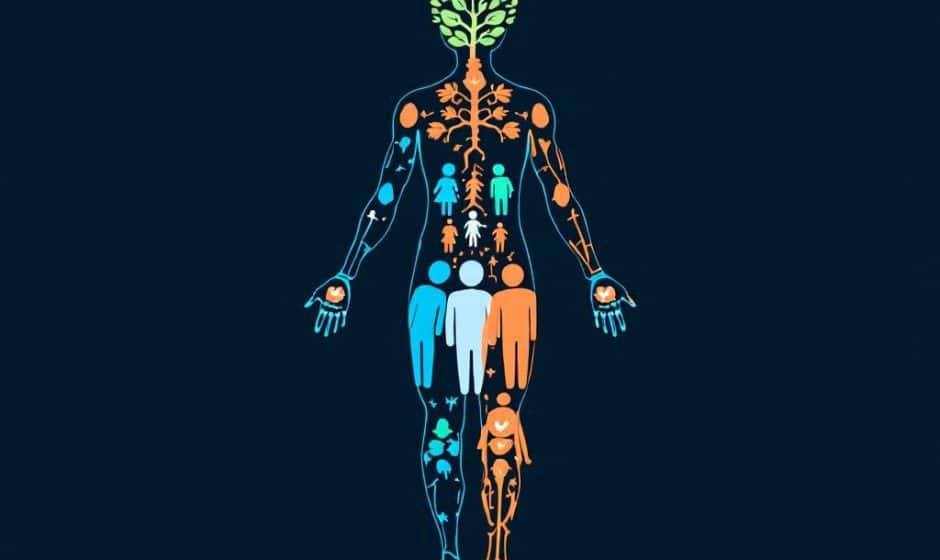Welcome to the wild, wild world of hormones—those little chemical messengers that run through our bodies, influencing just about everything. From how we grow to how we feel, it’s all about them. You know, hormones kinda act like your body’s text messages, but with way more influence on whether you feel super pumped or utterly wiped out for days. Consider this your full backstage pass to understanding four pivotal types of hormones: insulin, cortisol, estrogen, and testosterone. What’s the scoop on these hormones, and, hey, why should we even care?
Hormone Chaos: Understanding the Basics
When our bodies misfire or decide to throw a mini-chaotic rave without prepping with the right playlists—yep, it’s the hormones. And they often leave us feeling out of sorts. It’s a notorious troublemaker known in medical circles as hormonal imbalance. But before we get too tangled up in science-speak, let’s break it down to a level where we get it, really get it.
Insulin: The Glucose Whisperer
Alright, kickstarting with insulin. Toggle those lights on insulin, will you? It’s like the body’s concierge troop escorting glucose into your cells where it’s used to fuel the good stuff – like making those crucial spreadsheets look less bleary-eyed at 2 p.m.
But here’s the scoop — when insulin doesn’t show up right on cue or just decides not to act properly? Your blood sugar levels skyrocket or suddenly crash down. Often, this is the precursor to conditions like diabetes. And navigating a glucose rollercoaster? Not fun.
- What It Does: Regulates sugar in the blood. It’s the glucose gatekeeper.
- What Happens When It Goes Awry: Diabetes Type 1 or 2 can become a real-time concern.
- How to Play Nice with Insulin: Eating mindfully—especially cutting down on extremely sugary foods—can really keep things smooth like buttercream frosting minus the sugar spikes.
Cortisol: The Overlooked Stress Buddy

Let’s swing over to cortisol, often dubbed as the “stress hormone.” But label it and prepare yourself for a new respect for this underappreciated yet mood-swinging friend of ours. Who else alerts your body’s natural alarm system when showdown hour strikes, right?
Now, could cortisol be higher than a kite during times of stress? Absolutely. Swift heartbeats and that restless feeling might seem oddly familiar because, yeah, cortisol is having its field day.
- What It Does: Manages stress responses, regulates metabolism, and works to balance salt and water levels.
- The Curveball: Chronic stress can lower immunity, cause weight gain, and mess with your sleep.
- Getting Cortisol on Board: Stress-relief techniques such as taking leisurely walks, meditation, or genuinely belly-laughing with friends can dim down cortisol rush hours.
Estrogen: Not Just for Women
Let’s meander to estrogen without assuming it’s in a ‘women-only’ club because it’s not. Estrogen plays the field in both men’s and women’s bodies. Think of it as the ringmaster conducting puberty, moods, and reproductive capabilities like a maestro.
For women, an estrogen level that’s way off kilter could mean mood swings, weight gain, or insomnia crashing the party.
- What It Does: Develops and regulates the female reproductive system but is also crucial in various bodily functions in both genders.
- Potential Misfires: Irregular periods, menopausal symptoms, or endocrine disorders.
- Keeping Estrogen in Check: Include phytoestrogen-rich foods like soybeans or flaxseeds in your diet—it may help maintain balance. Also, consistency in exercise can keep estrogen levels harmonious.
Testosterone: More Than Just Muscle

Think “testosterone,” and instantly the image of brawny muscles flexing persistently hits the mind. But rewind and think broad. Testosterone promotes bone density, mood stability, fat distribution—and not just “Hercules” lookalikes.
Low testosterone, especially in men, spearheads its share of troubles: fatigue, depression, and even a dip in the libido.
- What It Handles: Drives male puberty and reproductive functions while also aiding muscle building and fat distribution in everyone.
- Potential Pitfalls: Low energy, mood disorders, reduced sexual drive.
- Leveling the Field: Regular physical activity, particularly resistance exercise, not only boosts testosterone but enhances overall wellness and mood.
Hormones in Harmony: Making It Personal
When these hormones are singing an opera tune together, life’s pretty sweet—but hit the inappropriate screeching note and you get chaos. Have you ever felt irritable before a test or anxious out of nowhere? No, it isn’t just ‘bad vibes.’ Could be your hormones playing a sinister DJ with your emotions and energy levels.
Personal Tips for Balance and Bliss
Now, trusting yourself with hormone knowledge is great, but you gotta apply this stuff. It means listening to your body like it’s a podcast telling you about your next best steps to a smoothie-infused nirvana. You want to cultivate habits attuned to balance, such as:
- Mindful Eating: No one’s expecting salads and Zen-like eating at all times, but being aware of sugar, alcohol, and processed foods makes sense. Your insulin and estrogen levels particularly appreciate this.
- Stress Handling: Keeping cortisol under the lid does wonders: yoga, laughter, or simply unplugging now and then can keep cortisol how it should be.
- Physical Activism: Talking gyms either frightens or excites us, but remember: it’s not the weapon; it’s an ally. Whether it’s dance, a simple daily walk, or an active hobby, movement tames and tunes testosterone along with stress levels.
- Sleeping Stewardship: Cracked the late-night binge-watch code but suffer from sleep deprivation? Slumber beats scrolling. Most hormone regulation happens in dreamland—make it count.
Real Talk

Understanding these 4 types of hormones isn’t about adding “endocrinologist” to your Twitter bio. It’s all about feeling connected and aware of what’s grooving within—not against your flow.
Setting hormones on your guest list for a pleasurable and health-fueled life isn’t hard. With a dash familiar with mindful lifestyle choices, hormones could very well place bow ties on greeting you at the door instead of catching you off guard with untamed parties.
Well, this seems long-winded, but hey—it’s your body’s DJ crew. Get to know them. Give them room, and expect a life where you’re facing the tune, not making its mess-up soundtracked anarchy.
So, next time you notice a sudden shift in energy or mood, friendly reminder: hormones might just be behind it. Have a heart-to-heart (or life-long affair) with them and ease up your own life’s rhythm. Isn’t that worth a shot?
Frequently Asked Questions
What are the benefits of using a hair mask in my hair care routine?
Using a hair mask can provide several benefits, including hydration, smoothing, strengthening, curl definition, heat protection, and damage repair. Hair masks infuse the hair with moisture, help coat the hair shaft to seal split ends, reduce breakage, and protect the hair from heat styling and environmental damage[1][4].
What ingredients should I look for in a hair mask?
Effective hair masks often include ingredients such as coconut oil, argan oil, shea butter, honey, avocado oil, green tea, and coconut water. These ingredients provide nourishment, moisturize, and protect the hair, offering benefits like softening, moisturizing, and protecting against damage[2][5].
How often should I use a hair mask in my routine?
You should use a hair mask whenever your hair feels dry, unmanageable, or in need of intense hydration. This can vary depending on your hair type and needs, but generally, using a hair mask once or twice a week can help maintain healthy and moisturized hair[1][4].
How do I apply a hair mask for the best results?
To apply a hair mask effectively, shampoo your hair first, then apply the mask, focusing especially on the ends where hair tends to be the most damaged. Leave the mask on for anywhere from 10 minutes to overnight, depending on the type of mask and your hair’s needs[1][4].
References



